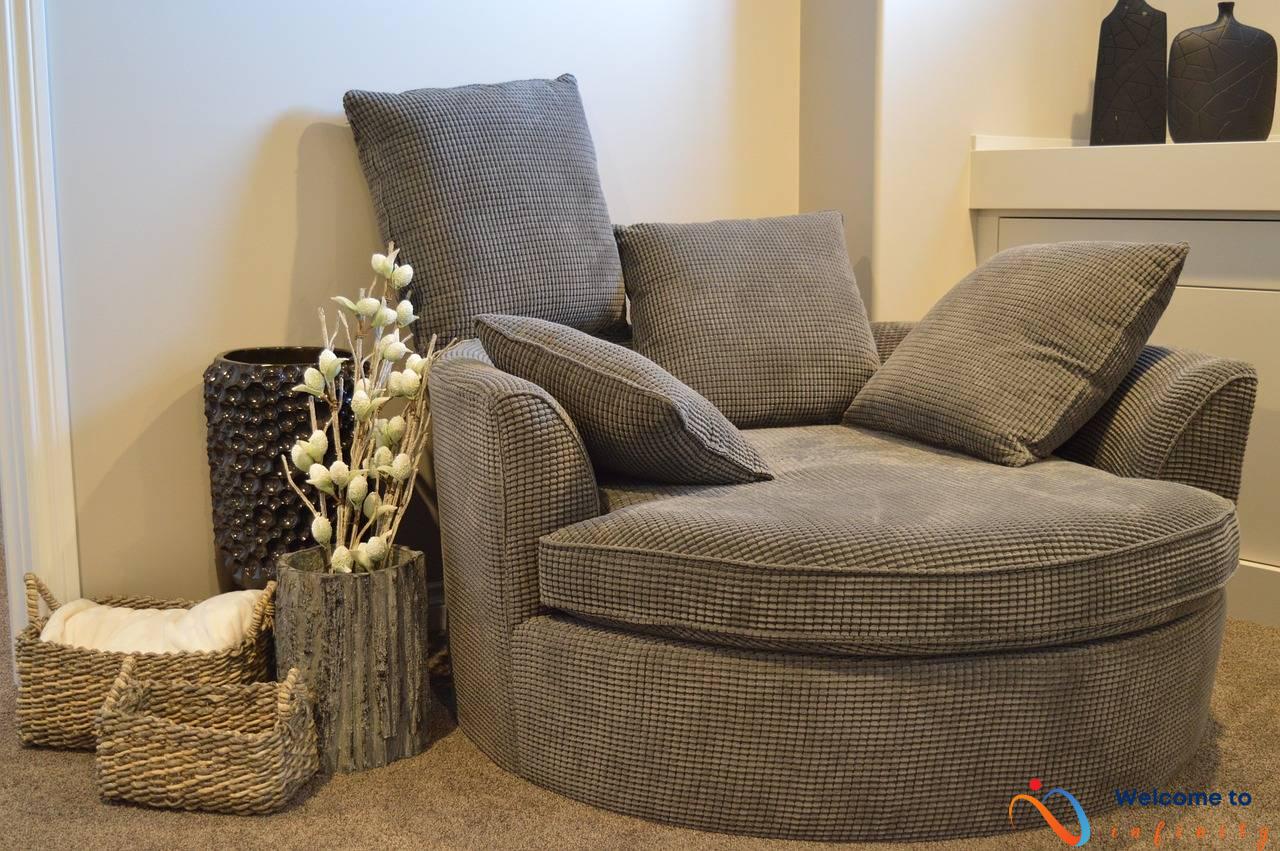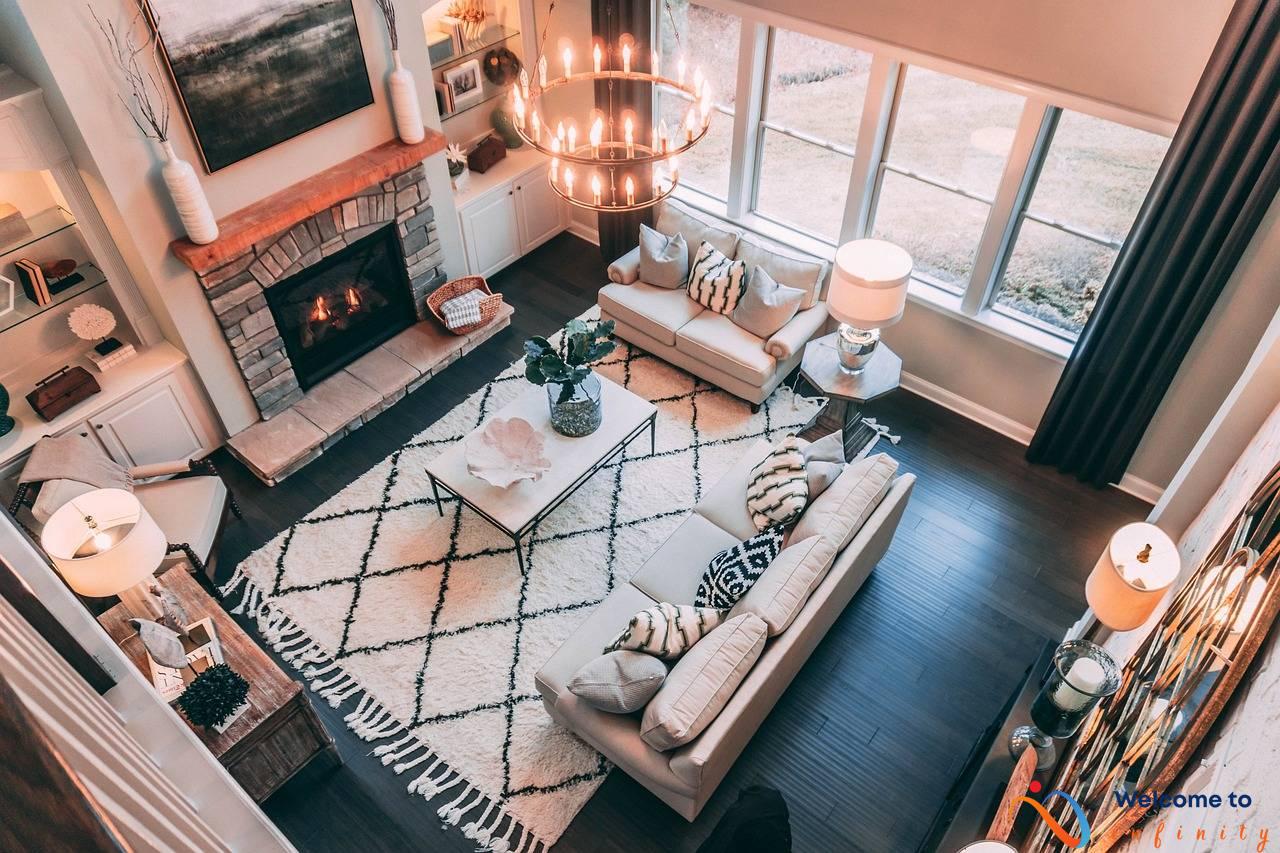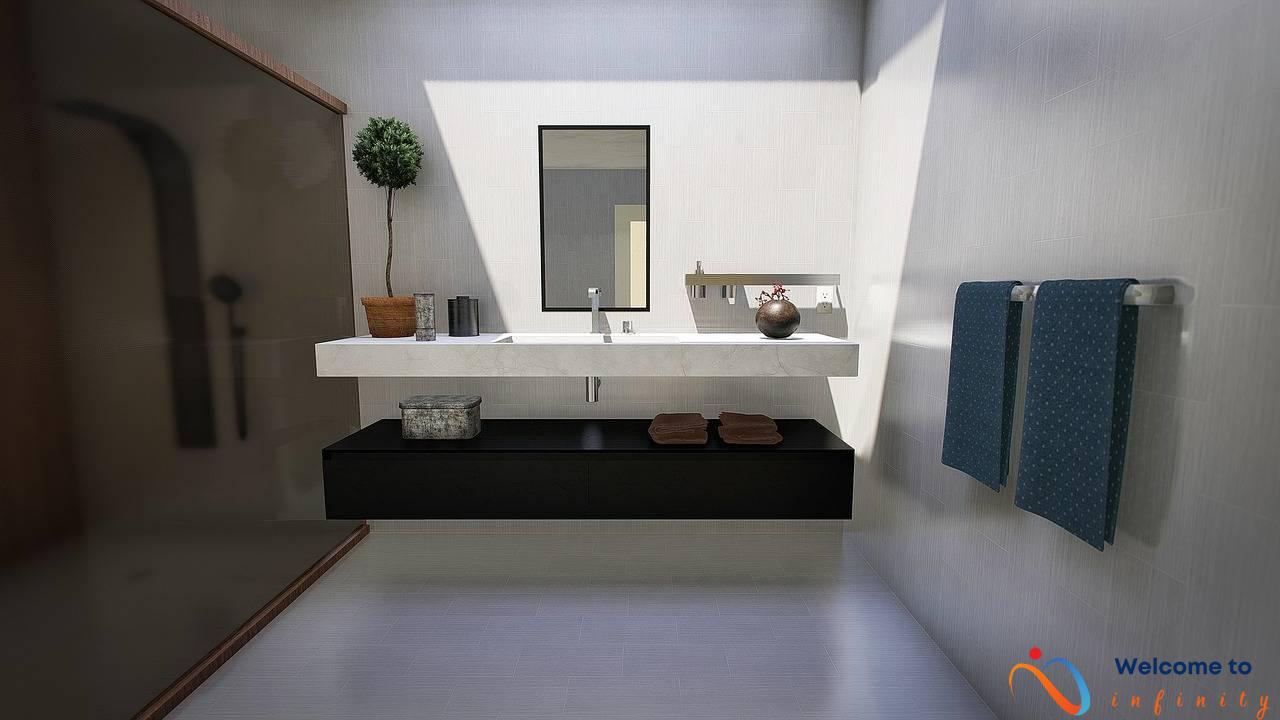If you're looking to reduce your carbon footprint and make your home more eco-friendly, sustainable design is the way to go. Incorporating sustainable design practices can lower your energy bills, improve your indoor air quality, and contribute to a greener environment. Here are some tips to get started:
The foundation of sustainable design is all about reducing waste and conserving resources. Start by incorporating smart home design concepts like passive solar heating, natural ventilation, and energy-efficient appliances. Use insulation and weather stripping to keep your home comfortable year-round, and consider installing low-flow faucets and toilets to conserve water.
When selecting materials for your home's interior and exterior design, choose eco-friendly and sustainable options whenever possible. Here are a few examples:
The flooring in your home can have a big impact on energy consumption and indoor air quality. Look for flooring options made from sustainable materials like bamboo, cork, or reclaimed wood. These materials are non-toxic, easy to maintain, and come in a variety of styles and colors.
Bamboo is quickly becoming a popular choice for eco-conscious homeowners due to its renewable nature and durability. Bamboo is also naturally resistant to pests and can be harvested without harming the environment.
Cork flooring is another sustainable option that offers both comfort and durability. Made from the bark of the cork oak tree, this flooring material is renewable, hypoallergenic, and offers excellent sound insulation.
Many traditional paints contain high levels of volatile organic compounds (VOCs), which can negatively impact indoor air quality and the environment. Look for low-VOC and non-toxic paint options that are safer for your family and the planet.
Reducing energy consumption in your home is a key component of sustainable design. Here are a few tips to get started:
Lighting accounts for a significant portion of a home's energy use. Maximize natural light by opening curtains or blinds during the day, and consider installing energy-efficient light bulbs or even skylights to reduce your reliance on artificial lighting.
Proper insulation and air tightness are essential to keeping your home comfortable and reducing energy waste. Seal air leaks around windows and doors, and insulate your attic, walls, and floors to prevent heat loss during the winter months.
The latest sustainable technology can help take your home to the next level. Consider incorporating solar panels to generate renewable energy, smart home automation to conserve energy, and even green roofs to reduce stormwater runoff and improve air quality.
By incorporating these sustainable design tips, you can reduce your carbon footprint and make your home a more eco-friendly and comfortable place to live.
Start with the Basics
When it comes to incorporating sustainable design in your home, it's best to start with the basics. This means implementing the fundamental elements that will lay the foundation for an eco-friendly home. Here are some tips to get started:
- Reduce water consumption by installing low-flow showerheads and faucets, fixing leaks, and opting for water-efficient appliances.
- Conserve energy by turning off lights and electronics when not in use, using energy-efficient light bulbs, and switching to a programmable thermostat.
- Improve indoor air quality by using non-toxic cleaning products, adding indoor plants, and using an air purifier.
- Choose durable and long-lasting materials that require less maintenance and replacement, such as recycled or salvaged materials.
Incorporating these basics will not only make your home more sustainable but can also save you money in the long run. It's a win-win situation that benefits both the environment and your wallet.
Choose Sustainable Materials
When it comes to sustainable design, choosing eco-friendly materials is key. Let's take a look at some of the materials you can use in your home's interior and exterior design that are both stylish and eco-friendly.
One of the most important aspects of sustainable design is choosing the right kind of flooring. Hardwood flooring may look beautiful, but it's not always eco-friendly. Instead, consider choosing sustainable alternatives like bamboo or cork flooring. Not only are they environmentally sustainable, but they also come in a variety of styles and colors, making them a great option for any home.
Bamboo is one of the most popular flooring options for eco-conscious homeowners. Not only is it a renewable resource, but it's also highly durable and easy to maintain. Plus, it comes in a variety of styles and colors, making it easy to match with your home's decor.
Cork flooring is another great option for sustainable design. Not only is it comfortable to walk on, but it's also antimicrobial and hypoallergenic. Plus, it's a renewable resource that can be harvested without harming the environment.
When it comes to sustainable design, choosing the right kind of paint is just as important as choosing the right flooring. Traditional paint can be full of harmful chemicals, so it's important to look for low-VOC and non-toxic options. This will not only keep your home healthy, but it will also reduce your carbon footprint.
When choosing sustainable materials for your home, it's important to consider both the interior and exterior design. By incorporating eco-friendly materials into your home's design, you can create a space that not only looks great but is also good for the planet.
Flooring
When it comes to sustainable design, choosing the right flooring is crucial. There are several eco-friendly and non-toxic flooring options that you can consider for your home:
- Bamboo: Bamboo is a fast-growing, renewable resource that is becoming a popular flooring option for eco-conscious homeowners. It's durable, attractive, and available in a range of styles and colors.
- Cork: Cork is a sustainable and comfortable choice for flooring. It's harvested from the bark of cork oak trees, which regenerate every 9-10 years. Cork flooring is soft, insulating, and can help reduce noise levels in your home.
- Reclaimed wood: Using reclaimed wood for flooring is a great way to incorporate sustainability into your home. Reclaimed wood is salvaged from old buildings, bridges, and other structures, giving it a unique look and feel.
- Linoleum: Linoleum is made from natural materials like linseed oil, cork dust, and wood flour. It's non-toxic, biodegradable, and comes in a variety of colors and patterns.
When choosing flooring, look for products that are certified by organizations like Forest Stewardship Council (FSC) or the Sustainable Forestry Initiative (SFI). These certifications ensure that the wood or bamboo used for flooring is responsibly sourced and harvested.
It's also important to choose flooring that is free from toxic chemicals like volatile organic compounds (VOCs). VOCs can be harmful to your health and the environment. Look for flooring products with low or no VOCs to create a healthier home.
Bamboo
Bamboo flooring has become one of the most popular choices for eco-conscious homeowners and it's easy to see why. Not only is bamboo a renewable resource that grows much faster than hardwood trees, but it's also durable and resistant to scratches, dents, and stains.
Bamboo flooring is also easy to install, with options ranging from click-lock systems to glue-down methods. It can be used in any room of the house, including kitchens and bathrooms, as long as it's properly sealed to avoid water damage.
One of the best things about bamboo flooring is its natural beauty. It comes in a range of colors and textures, from light blond to dark brown, and can even mimic the look of traditional hardwood flooring.
If you're worried about the environmental impact of the production process, look for bamboo flooring that's made with low or zero-VOC finishes and adhesives. This ensures that no harmful chemicals are released into your home.
Overall, bamboo flooring is a sustainable and stylish choice for anyone looking to upgrade their home's flooring while also caring for the environment.
Cork
If you're looking for an eco-friendly and stylish flooring option for your home, cork might be the perfect choice for you. Cork is a highly sustainable and renewable material, as it's harvested from the bark of cork oak trees without harming them. It's also a comfortable choice, as it has a natural cushioning effect that makes it soft underfoot and reduces noise transmission.
Cork flooring comes in a variety of colors and patterns, so you can easily find one that fits your home's design style. It's also incredibly easy to install, as it comes in tiles or planks that can be clicked together without the need for adhesive. Additionally, cork is resistant to mold, mildew, and bacteria, making it a healthy choice for your home.
One of the best things about cork flooring is that it's highly durable and can withstand heavy foot traffic and wear and tear. It's also a great choice for homes with pets, as it's scratch-resistant and doesn't trap pet hair or allergens. And if your cork flooring does get scratched or damaged, it's easy to repair by sanding it down and resealing it.
- One thing to keep in mind is that cork flooring can be more expensive than other flooring options, but it's worth considering the long-term benefits and eco-friendly advantages.
- It's also important to note that cork flooring can fade over time when exposed to direct sunlight, so it's best to use window coverings or tinted glass to protect it.
Overall, cork flooring is a great choice if you're looking for an eco-friendly, comfortable, and stylish flooring option for your home. It's a durable and healthy choice that's easy to install and maintain, making it a great investment for you and the environment.
Paint
When looking to create an eco-friendly and sustainable home, it's important to consider the type of paint used in your interior design. Traditional paint contains volatile organic compounds (VOCs) that can release harmful chemicals into the air, impacting both your health and the environment. Luckily, there are now many low-VOC and non-toxic paint options available for a healthier home.
Low-VOC paints are a great option for those looking to reduce their carbon footprint without compromising on the quality of their home's interior design. These paints are free of harmful chemicals and release fewer VOCs, making them a safer and healthier choice for your family and the environment. When choosing low-VOC paint, look for products that have the Green Seal certification or other eco-friendly labels.
Non-toxic paint options are also available for those with specific health concerns or sensitivities. These paints are made with natural, non-toxic ingredients such as milk protein, clay, and citrus. They are safe to use and do not release any harmful chemicals into the air, making them a great choice for anyone looking for a healthier home environment.
When selecting your paint, don't forget to consider the color options available. Bright, vibrant hues may contain more chemicals than muted tones, so opt for neutral or pastel tones whenever possible. You can also consider adding eco-friendly pigments to your paint to create a unique and personalized color palette.
In addition to selecting low-VOC and non-toxic paints, it's important to properly dispose of any leftover paint or containers. Many local recycling centers accept unused paint or used containers for proper disposal. By making the switch to eco-friendly paint and properly disposing of any waste, you can create a healthier and sustainable home environment for yourself and your family.
Reduce Energy Consumption
If you want to take a step further in making your home eco-friendly, you should focus on reducing your energy consumption. This will not only help save the environment but also lower your monthly energy bills. Here are some tips that you can implement to reduce your carbon footprint:
- Switch to energy-efficient light bulbs or LED lights. These bulbs are long-lasting and use less energy than traditional light bulbs.
- Install programmable thermostats to regulate the temperature in your home. This can save you up to 10% on your annual heating and cooling costs.
- Insulate your home properly to keep the warm air inside during winters and cool air during summers. This can reduce energy consumption by 20-30%.
- Use natural ventilation in your home with the help of windows and fans. This will help circulate fresh air and lower your need for air conditioning.
- Unplug your electronics and appliances when you are not using them. Many devices continue to use energy even when they are not in use, contributing to your carbon footprint.
By implementing these tips, you can significantly reduce your carbon footprint and contribute to a greener environment.
Lighting
Lighting is an essential part of every home and can create a welcoming and warm atmosphere. However, lighting can also be a significant source of energy consumption in your home. There are several ways to reduce your energy consumption while still achieving the desired lighting effect in your home.
The first step is to make use of natural light. If you have large windows and skylights, take advantage of them! Open up your curtains and blinds during the day to let in natural light. Keep in mind that direct sunlight can cause your home to heat up, so use shading devices such as blinds or curtains to prevent solar heat gain.
When it comes to artificial lighting, consider investing in LED light bulbs. LED lights consume less energy than traditional bulbs, making them an eco-friendly choice. They also last longer, which means you'll save money in the long run. Another option is to install dimmer switches. Dimming your lights not only sets the mood but also reduces energy use.
In addition to LED bulbs and dimmer switches, you can also use task lighting. Task lighting illuminates a specific area without lighting up the entire room. This approach not only saves energy but also adds depth and interest to your home's design. You can also use motion sensors to control your lighting. These sensors detect movement and automatically turn the lights on and off. This is a great option for outdoor lighting or spaces with less foot traffic.
Overall, using natural light, switching to LED bulbs, dimming your lights, and using task lighting are simple and effective ways to reduce your energy consumption while still illuminating your home in an eco-friendly way.
Insulation and Air Tightness
Insulation and air tightness play a crucial role in making your home energy-efficient and reducing your energy bills. Proper insulation helps to maintain a consistent temperature throughout your home, while air tightness minimizes heat loss and the need for excess heating.
One effective way of insulating your home is by using materials such as spray foam, cellulose, or fiberglass. These materials are placed in walls, ceilings, and floors to keep your home warm and energy-efficient. A well-insulated home can also help to reduce noise pollution, making your environment more peaceful.
Air tightness can be achieved by sealing up gaps and cracks in walls, doors, and windows. This minimizes drafts, prevents heat leakage, and controls moisture. Installing energy-efficient windows and doors with airtight seals can also help to improve your home's insulation and reduce your energy consumption.
Another important aspect of air tightness is ventilation. Proper ventilation ensures that fresh air circulates in your home, preventing dampness and improving the indoor air quality. There are various ventilation systems available, including mechanical ventilation with heat recovery, which can help to reduce humidity and energy consumption.
By incorporating proper insulation and air tightness measures in your home, you can keep your environment warm, cozy, and energy-efficient. This not only helps to reduce your energy bills but also reduces your carbon footprint, contributing to a greener planet. Take the necessary steps to improve your home's insulation and air tightness today and enjoy the benefits of a sustainable and eco-friendly home!
Use Green Technology
One of the most effective ways to make your home eco-friendly is by using green technology. With the ever-advancing world of technology, there are now many sustainable options for your home that contribute to reducing your carbon footprint. Below are some of the latest green technology options to explore:
Solar panels are becoming increasingly popular as they are a renewable source of energy that does not emit harmful pollutants. By installing solar panels on your roof, you can generate your own energy and reduce your reliance on non-renewable sources.
Smart home automation systems allow you to control and monitor your home's energy usage from anywhere. You can set schedules and timers for your lights and appliances to reduce energy consumption and save on electric bills. With the latest technology, these systems can even learn your habits and adjust accordingly, making your home more efficient without you having to do anything.
A green roof is a living roof that is covered in vegetation and can help insulate your home while reducing stormwater runoff. By using plants as insulation, green roofs can reduce energy costs by keeping your home cool in the summer and warm in the winter. They are also a great way to create more green space in your urban environment.
Heat pumps are a more efficient way to heat and cool your home compared to traditional HVAC systems. They work by transferring heat from the air or ground outside your home to the inside, making them a great option for both heating and cooling. They use less energy than conventional heating systems and can save you money on energy bills in the long run.
Water is a precious resource, and using a water filtration system in your home can help reduce the amount of water wasted. By filtering and reusing graywater (from sinks, showers, washing machines), you can save water that would otherwise be wasted. Additionally, some filtration systems can purify rainwater for household use.
By incorporating green technology into your home, you can not only reduce your carbon footprint but also save money on energy bills in the long run. Consider these options when looking to upgrade your home's technology to make it more sustainable and eco-friendly.
Solar Panels
Solar panels are an increasingly popular option for homeowners who want to embrace sustainable energy and reduce their electricity bills. By harnessing the power of the sun, solar panels convert sunlight into energy that can be used to power your home. There are many benefits of incorporating solar panels into your home's design.
- Savings on energy bills: Perhaps the biggest benefit of solar panels is the savings you'll see on your energy bills. By using the energy generated by your solar panels, you can reduce your reliance on the grid and cut down on your monthly bills.
- Eco-friendly: Solar panels are a clean and renewable source of energy. Unlike traditional electricity sources that rely on fossil fuels, using solar panels doesn't produce harmful emissions or contribute to climate change.
- Increase in home value: Installing solar panels can increase the value of your home. Potential buyers are often attracted to energy-efficient homes, and solar panels can be a major selling point.
- Tax incentives: Depending on where you live, there may be tax incentives or rebates available for installing solar panels. Be sure to research available incentives in your area before making a decision.
When incorporating solar panels into your home's design, it's important to consider factors such as the orientation of your roof, the number of panels needed, and the size of the system required to power your home. If you have limited roof space or want to minimize the visual impact of your solar panels, you can also consider ground-mounted systems or solar tiles.
By utilizing the power of the sun, solar panels can help you to reduce your carbon footprint, save money, and increase the value of your home. If you're interested in incorporating solar panels into your home's design, be sure to research the options available and consult with a professional to determine the best approach for your needs and budget.
Smart Home Automation
If you are interested in reducing energy consumption while making your home more comfortable and convenient, smart home automation may be the solution you're looking for. With advances in technology, it is now possible to control your home's lighting, heating, cooling, and even security systems with just a few taps on your smartphone.
Smart home automation allows you to automate certain tasks, such as turning off lights and adjusting thermostat settings when you leave the house, or turning on lights and adjusting room temperature before you arrive home. This saves energy and reduces your carbon footprint by ensuring that you only use energy when you need it.
Moreover, smart home systems can detect which rooms are currently in use and adjust temperature settings accordingly, ensuring that empty rooms don't continue to be heated or cooled unnecessarily. This can lead to significant energy savings and lower energy bills.
Another great benefit of smart home automation is that it allows you to monitor your energy use and make adjustments as needed. With the right sensors and apps, you can track your energy consumption in real-time and receive regular reports on how you can improve your home's energy efficiency.
Lastly, smart home automation can be integrated with renewable energy sources such as solar panels and wind turbines, allowing you to further reduce your reliance on fossil fuels and contribute to a healthier environment.
Overall, smart home automation is a great way to incorporate sustainable design into your home while making it more convenient and comfortable for you and your family. By reducing your energy consumption and using renewable energy sources, you can lower your carbon footprint and do your part in protecting the environment.












